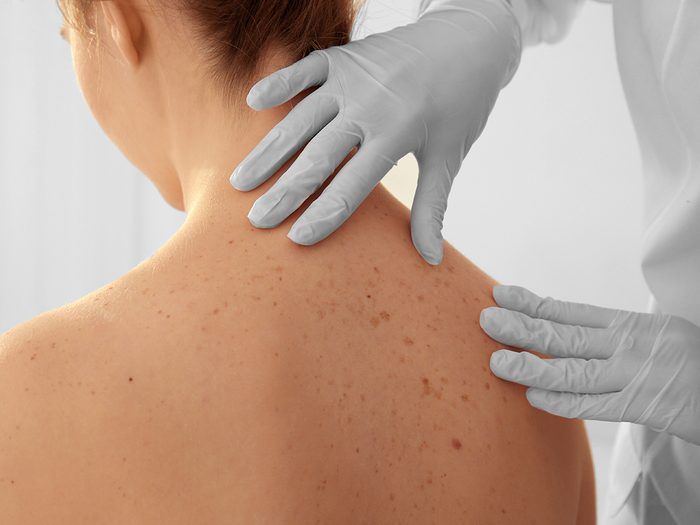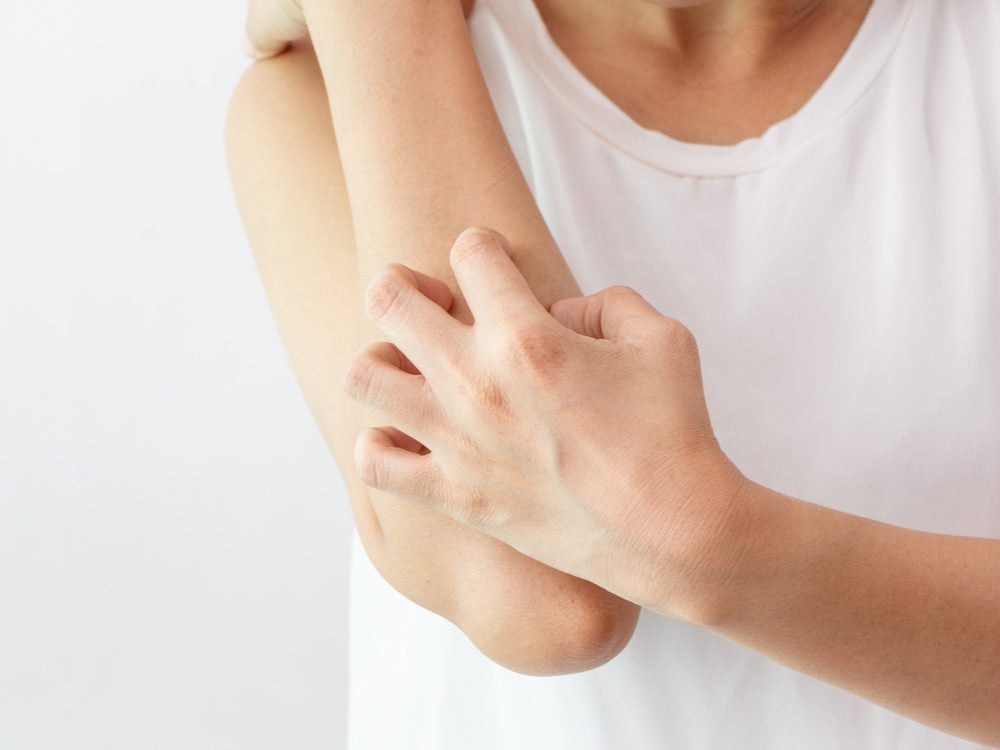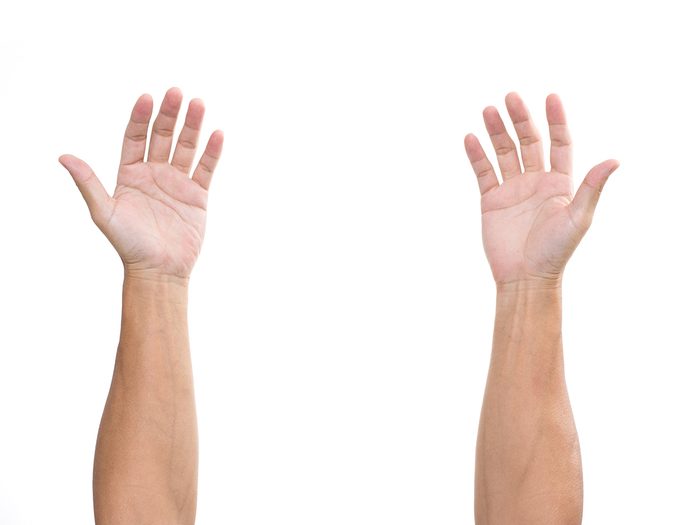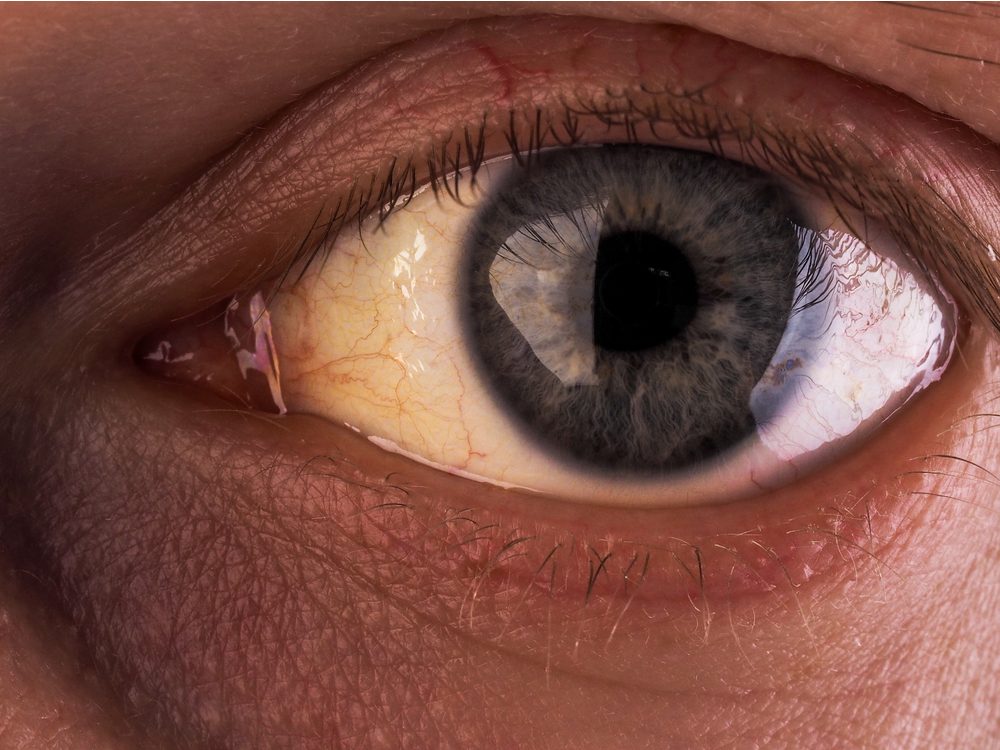
These skin changes could be red flags
As your body’s largest organ and one of the easiest ones to observe, your skin offers interesting clues about your health. That said, you can’t read it like a book. Many skin changes have several possible explanations.
Suppose you start itching all over: the lineup of suspects ranges from dry air to kidney failure (and the former is more likely). It’s always smart to ask a GP or a dermatologist about anything out of the ordinary, but to spare yourself unnecessary anxiety, don’t jump to the scariest conclusion right off the bat.
A few skin changes, however, are more likely to indicate something serious. Most everyone knows to keep an eye out for possible signs of skin cancer, such as sores that don’t heal and moles that ooze, bleed or change size, colour or shape. Here are some other signals that could easily point to problems that aren’t just skin deep.

You have itchy bumps and blisters
Dermetitis herpetiformis (DH) is a chronic skin condition that manifests as a result of celiac disease. You might have it if you keep getting intensely itchy clusters of bumps and blisters on your elbows, forearms, knees or buttocks.
Interestingly, people with DH are often spared celiac disease’s signature stomach symptoms. “When they’re present, they’re mild and include diarrhea, abdominal pain and cramping,” explains Dr. Antonio Gasbarrini of United European Gastroenterology.
However, you can still have intestinal damage, as well an increased risk of lymphoma and other blood cancers. “Adherence to a strict gluten free diet seems to reduce this risk,” says Gasbarrini, which means you shouldn’t let DH go unconfirmed and uncontrolled. A doctor can take a skin biopsy to check for telltale antibodies.
Here are six common rashes, decoded.

Your palms are getting thicker
When your palms become thick and velvety, and their lines and ridges become extra pronounced, it’s likely you have what is called tripe palms (so named for the sufferer’s hands’ resemblance to boiled beef tripe). This condition is rare, but when it does arise, it’s associated with cancer over 90 per cent of the time (usually of the lung or stomach). It isn’t known how a tumour elsewhere in the body can affect the hands’ tissues this way, but what matters is that tripe palms can appear before other symptoms, giving you an early warning.
Here’s what it could mean if your hands are always cold.

Your skin is yellowing
Yellowing of the skin and eyes is common among newborn babies, where it usually means that their liver isn’t doing its job optimally yet. But among adults, the most common causes of jaundice include liver disease (such as hepatitis or cirrhosis), a gallstone or tumour blocking the bile duct, or a drug- or supplement-induced liver injury. Don’t delay a visit to your doctor.
Find out more signs of disease that are written all over your face.

You’re developing skin patches
Acanthosis nigricans refers to thick, velvety patches that are darker than your natural skin tone and often show up in places where your skin creases, such as your neck or armpits. They could be benign or caused by something you’re taking, such as high doses of niacin, but they’re more frequently a sign of insulin resistance. In short, you may be at risk of diabetes.
Acanthosis nigricans is one of the most common ways that diabetes and prediabetes manifest in the skin, but there are others: they include brown spots on the shins; yellowish, pea-sized bumps on the body; or thick, waxy, tight skin on the fingers, hands and toes.
Now that you know the skin changes to watch for, find out the best foods for healthy skin.